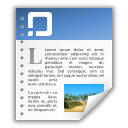The History Classroom for English Language Learners
Summerlin, Scott
:
2008-02-20
Abstract
This essay seeks to contribute to the body of knowledge of how to successfully engage language minority students in the study of history. It is separated into four distinct sections, each containing findings from research-based publications, as well as discussions of how these findings can be reflected in history classrooms. The first, - learners and learning, - deals with three points. First, it will identify the ideal goal of successful teachers: formulating exercises that give diverse students from differing backgrounds an opportunity to comprehend historical content. Next, it will discuss the four phases of language acquisition. Lastly, it will briefly describe the idea of incorporating students' native languages into classroom activities. The second section, - learning environment, - covers two main topics. First, it will describe skills that history teachers should attempt to cultivate in their students: critical thinking, cultural appreciation, and sophisticated communication techniques. Then it will discuss how teachers can go about emphasizing these skills, mainly by modifying traditional classroom practices and adjusting communication practices. The third section is - curriculum and instructional strategies, - will outline four strategies. First, it will discuss the K-W-L method and explain its benefits. It will also state the benefits of source work for English language learners. Third, this section states that the aim of effective curriculum is to relate historical content to students' current circumstances. Lastly, it will devote time to explaining why and how reading should be emphasized for English language learners in history classes. The forth major sub-topic of this essay, - assessment, - states the goal of meaningful assessments. It goes on to explain how assessments can vary in form, as well as how grading policies can be adjusted in favor of English language learners. It will also discuss informal and formal assessments. The final section, - implications, - which serves as a brief recap of the essay, centers on three concepts: education, collaboration, and innovation.

